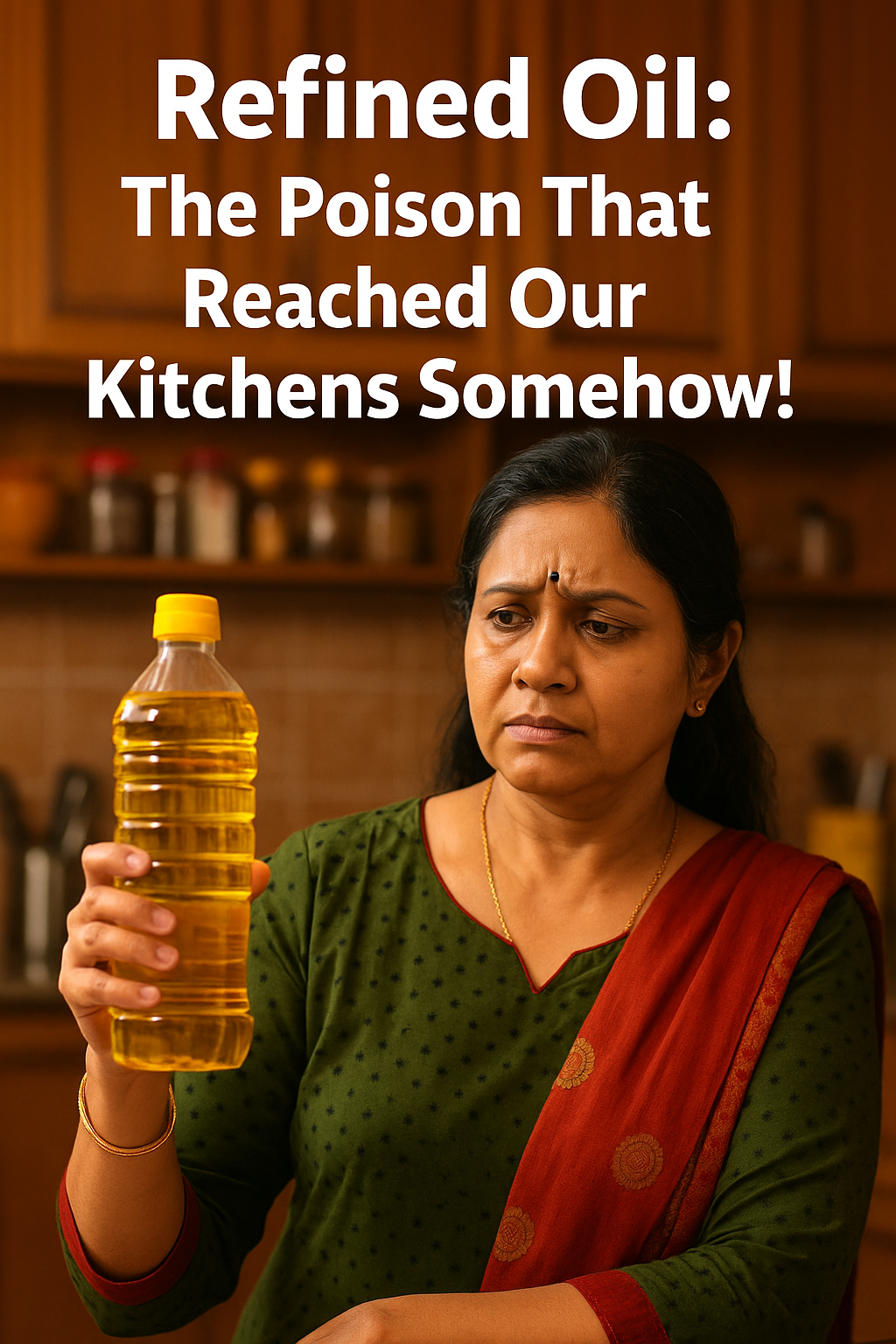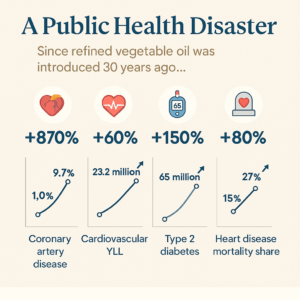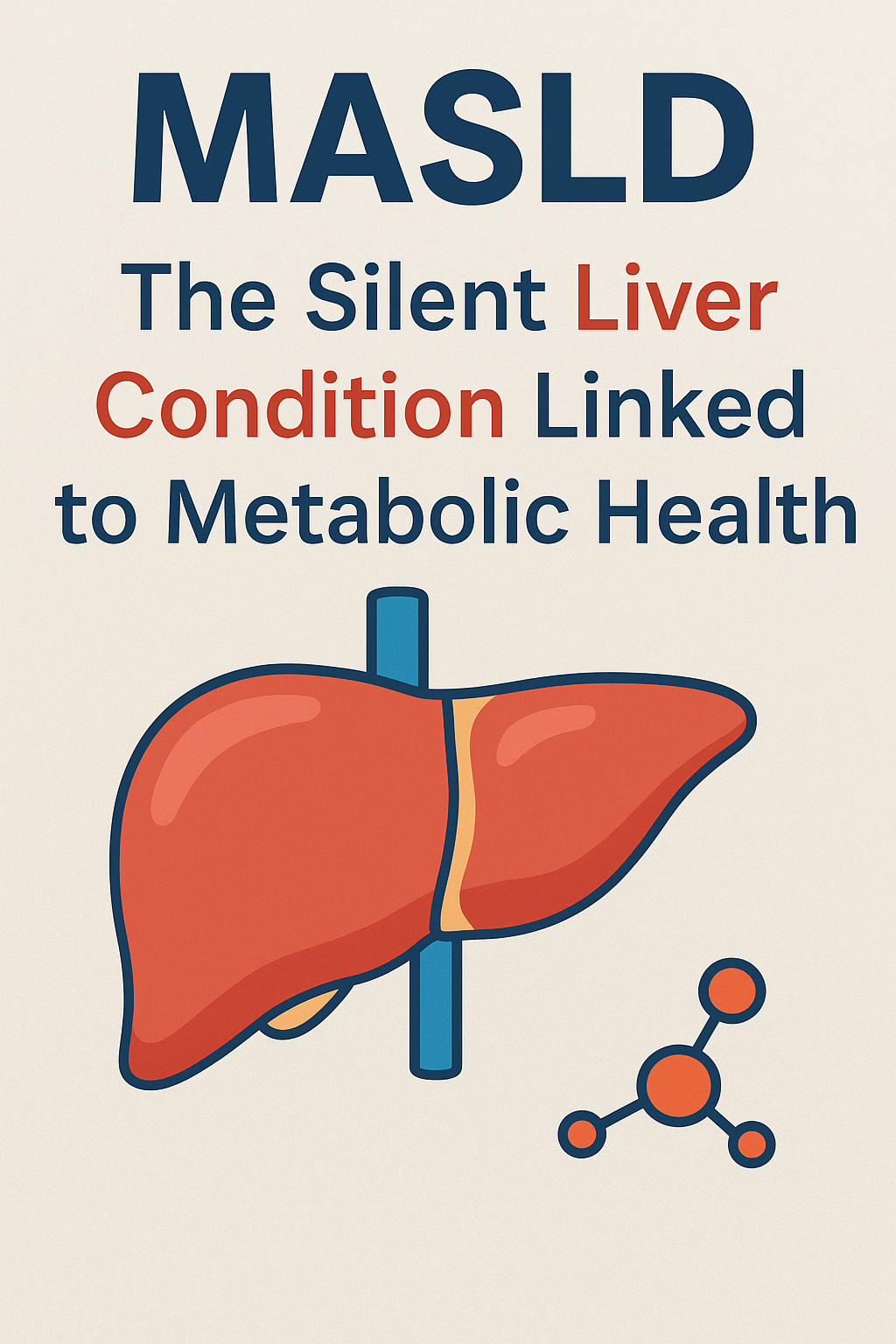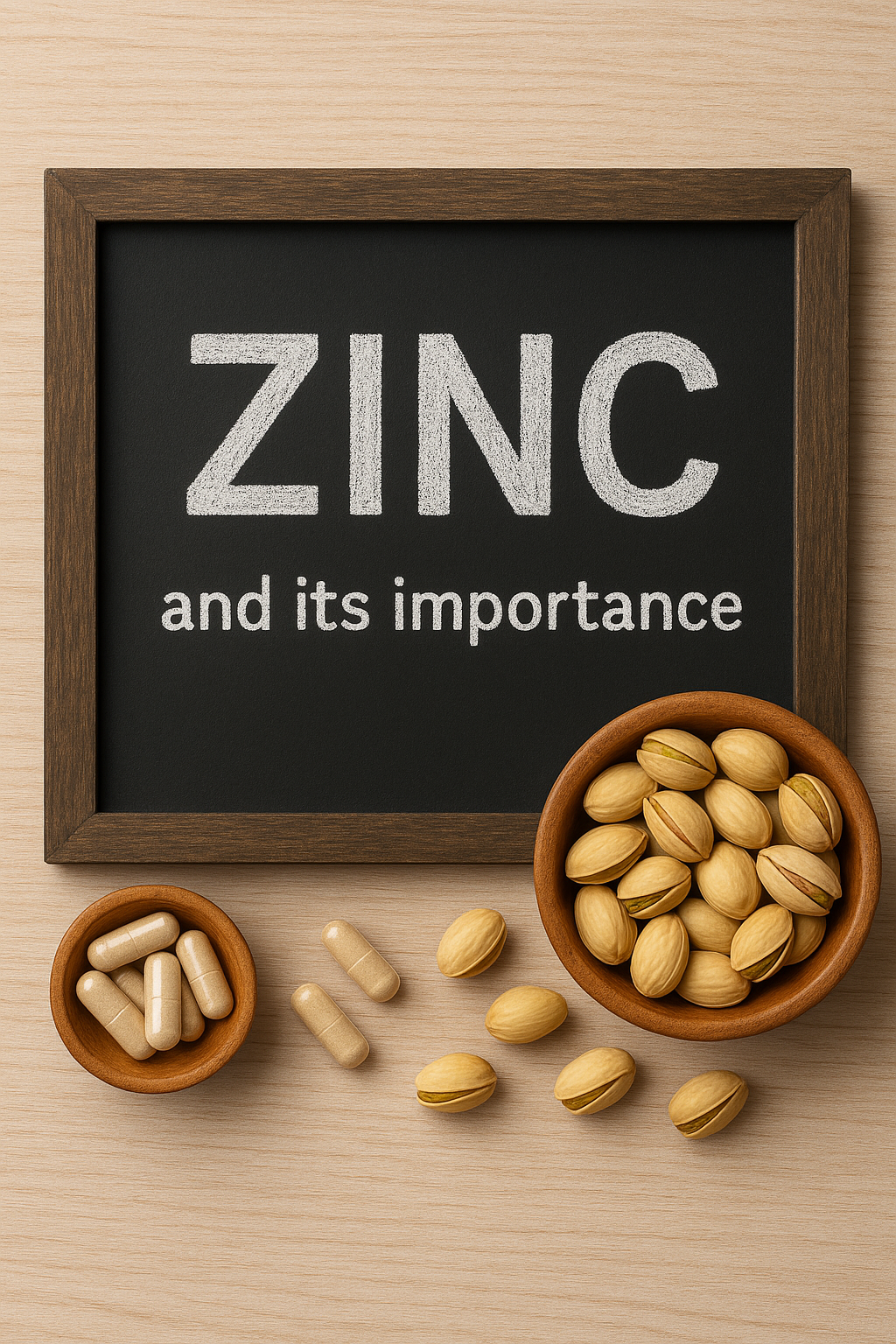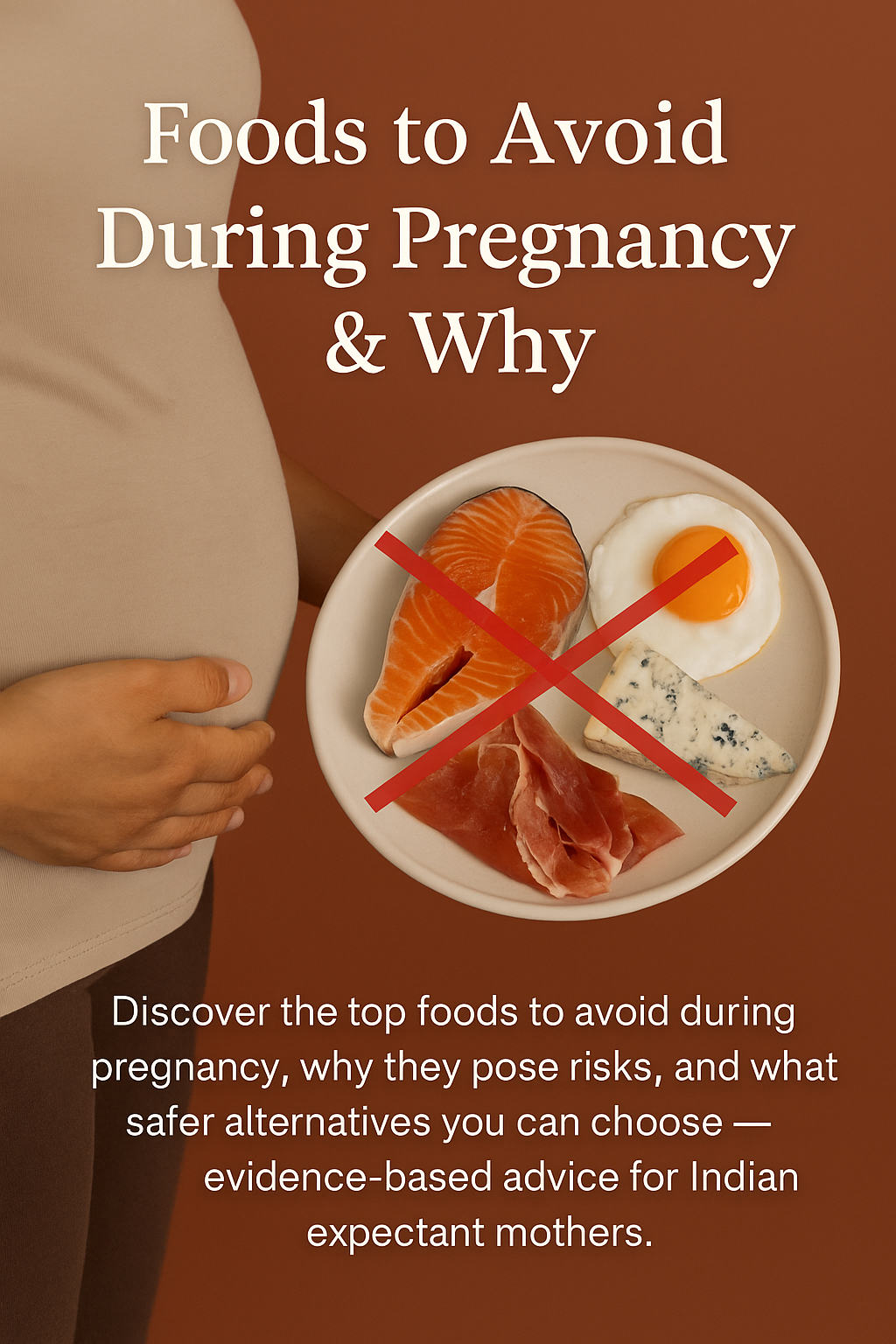For decades, Indian kitchens brimmed with the rich aroma of cold-pressed mustard oil, groundnut oil, coconut oil, and desi ghee. These traditional fats were once the foundation of our culinary culture—until they were stealthily replaced by the so-called modern alternative: refined oil or vegetable oil.
Today, refined oils are everywhere. But are they truly healthy, or have we unknowingly let a slow poison into our homes? Let’s explore the science, history, and health consequences of refined oils in the Indian context.
🏭 What Is Refined Oil?
Refined oils are heavily processed vegetable oils extracted from seeds such as sunflower, soybean, safflower, corn, rice bran, or cottonseed. Unlike traditional cold-press methods, refined oils undergo:
- Chemical solvent extraction (commonly using hexane)
- Degumming (removing phospholipids)
- Neutralization (adding lye to remove free fatty acids)
- Bleaching (removing color using clays)
- Deodorization (high-heat steam to remove odors)
This process strips the oil of natural antioxidants, vitamins (like E and K), and enzymes, while exposing it to high heat, which oxidizes fatty acids and forms toxic compounds like trans fats and aldehydes.
❌ Health Hazards of Refined Oils
1. Oxidative Stress and Inflammation
Refined oils are high in omega-6 polyunsaturated fatty acids (PUFAs). When consumed excessively and in imbalance with omega-3s, they promote chronic inflammation, which underlies heart disease, diabetes, and even cancer.
2. Increased Heart Disease Risk
Contrary to popular belief, replacing ghee or saturated fats with refined oils hasn’t lowered heart disease in India. In fact, India has seen a sharp rise in heart disease since the widespread adoption of refined seed oils.
3. Trans Fats and Aldehydes
High-heat deodorization during refining creates trans fats and aldehydes, both of which are toxic and carcinogenic.
4. Insulin Resistance and Obesity
Studies show that omega-6 dominant refined oils can impair insulin sensitivity and contribute to abdominal fat gain.
🕰️ Why Did India Switch to Refined Oils?
1. Marketing Myths & Industrial Lobbying
In the 1980s and 1990s, aggressive campaigns promoted refined oils as ‘heart-healthy’ and modern. Ghee was vilified for its saturated fat content despite being a time-tested, Ayurvedic staple.
2. Cheaper & Mass-Produced
Refined oils are cheaper to produce at scale and have longer shelf lives—ideal for packaged foods and urban supply chains.
3. Convenience & Neutral Taste
Many households shifted due to the ‘odorless’ appeal of refined oils. Traditional oils like mustard or coconut have strong flavors that were less favored in a Westernizing food culture.
📉 A Public Health Disaster
Since the widespread adoption of refined oils in India (starting from the 1980s), several health metrics have worsened dramatically:
-
🫀 Coronary Artery Disease (CAD)
-
In urban India, CAD prevalence rose from 1.0% in the 1970s to a staggering 9.7% by 1990—nearly a 10-fold increase within two decades.
-
-
📈 Premature Mortality (Years of Life Lost)
-
🍬 Type 2 Diabetes Prevalence
-
In 1990, approximately 26 million Indians had diabetes. By 2016, this had more than doubled to 65 million, which is expected to rise to over 134 million by 2045.
-
-
⚠️ Current Burden
-
Today, India is the world capital of Diabetes, accounting for every 1 in 4 diabetes cases globally.
-
-
🌿 Heart Disease Mortality Share
-
Cardiovascular diseases now cause approximately 27% of all deaths in India, with South Asians experiencing events 5–10 years earlier than other populations.
-
🔍 Insight:
These alarming increases in CAD, cardiovascular mortality, and diabetes closely parallel the promotion and adoption of refined seed oils, processed foods, and the industrialized diet in India. The switch from traditional, minimally processed fats to refined oils may well be a contributing factor—alongside urbanization and sedentary lifestyle—that drove this public health crisis.
✅ The Alternatives: Going Back to Roots
1. Cold-Pressed Oils (Kacchi Ghani)
- Mustard oil
- Groundnut oil
- Coconut oil
- Sesame oil
These retain antioxidants, enzymes, and have natural anti-inflammatory properties.
2. Desi Ghee
Rich in fat-soluble vitamins (A, D, E, K), butyric acid, and CLA (conjugated linoleic acid) that support heart and gut health.
3. White Butter and Animal Fats (in moderation)
Used traditionally and far less inflammatory than seed oils.
💬 Final Thoughts
Refined oil is not just unhealthy; it’s a chemical-laced industrial product never meant for human consumption. The shift from traditional fats to refined oils parallels India’s spike in metabolic and cardiovascular disease.
As a doctor and public health advocate, I urge you to question the narrative. Let’s go back to our roots, reclaim our native wisdom, and cook with oils that heal instead of harm.
📚 References
- Simopoulos AP. The importance of the ratio of omega-6/omega-3 essential fatty acids. Biomed Pharmacother. 2002 Oct;56(8):365-79.
- Misra A, Singhal N, Sivakumar B, Bhagat N, Jaiswal A, Khurana L. Nutrition transition in India: secular trends in dietary intake and their relationship to diet-related non-communicable diseases. J Diabetes. 2011 Dec;3(4):278-92.
- Grootveld M. Evidence-Based Challenges to the Continued Recommendation and Use of Peroxidatively-Susceptible Polyunsaturated Fatty Acid-Rich Culinary Oils for High-Temperature Frying Practises: Experimental Revelations Focused on Toxic Aldehydic Lipid Oxidation Products. Front Nutr. 2022 Jan 5;8:711640.
- Alvheim AR, Malde MK, Osei-Hyiaman D, Lin YH, Pawlosky RJ, Madsen L, Kristiansen K, Frøyland L, Hibbeln JR. Dietary linoleic acid elevates endogenous 2-AG and anandamide and induces obesity. Obesity (Silver Spring). 2012 Oct;20(10):1984-94.
- Mohan V, Venkatraman JV, Pradeepa R. Epidemiology of cardiovascular disease in type 2 diabetes: the Indian scenario. J Diabetes Sci Technol. 2010 Jan 1;4(1):158-70.
- Prabhakaran D, Jeemon P, Roy A. Cardiovascular Diseases in India: Current Epidemiology and Future Directions. Circulation. 2016 Apr 19;133(16):1605-20.
- Srinivasan N, Gullapalli N, Shah KS. Highlighting the South Asian Heart Failure Epidemic. Card Fail Rev. 2024 Jul 16;10:e07.

Akanksha Sharma
Dr. Akanksha Sharma, Head Writer and creator of AtoZ of Pregnancy, is dedicated to empowering women, parents, and families through 360-degree knowledge. She and her team provide evidence-based advice to guide families through pregnancy, parenting and beyond.

